- Home
- Resources
- Safe work procedures
- Drilling into non-friable asbestos using a thickened substance to control airborne fibres and dust
Asbestos
Drilling into non-friable asbestos using a thickened substance to control airborne fibres and dust
This safe work procedure describes the safe work procedure for drilling holes into non-friable (bonded) asbestos-containing material (ACM) such as fibro, hardiplank, compressed sheeting and tilux using a thickened substance (such as shaving foam) to control airborne fibres and dust.
Equipment
A range of equipment should be used to control the risk of exposure to airborne asbestos fibres, including:
- 200 μm plastic drop sheets
- rolls of duct or gaffer tape
- plastic bags 1200 x 900 mm (200 μm) with a warning label (e.g. CAUTION: Asbestos, Do no damage or open bag. Do not inhale dust.)
- warning signage
- barricading or hazard tape
- bucket three-quarters full of water
- atomiser bottle with water
- access to a continuous supply of water
- cordless drill or hand drill
- drill bits suitable for the task
- tape measure
- clear disposable cups
- thickened substance eg. shaving cream or hair gel
- rags or disposable wipes
- PVA glue (or other sealant) and a small paint brush
- marker pen
- access to a first aid kit
- spare PPE
- safety lace less work boots
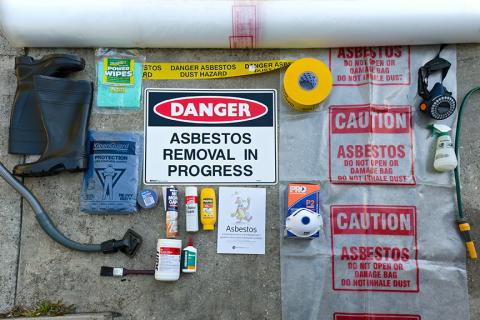
Some of the required equipment.
Safe work procedures
Follow the steps depicted below and view the example videos.
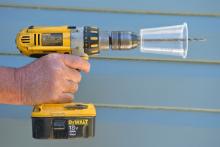
Step 1
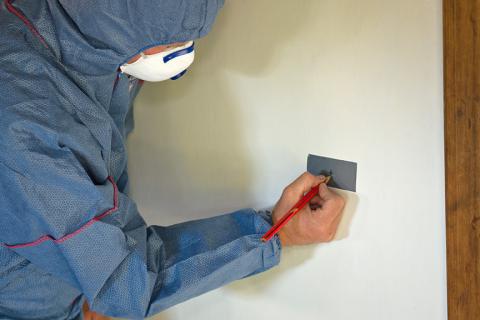
1. Place duct tape over intended drilling point. Mark the proposed hole for drilling on the duct tape.
Step 2
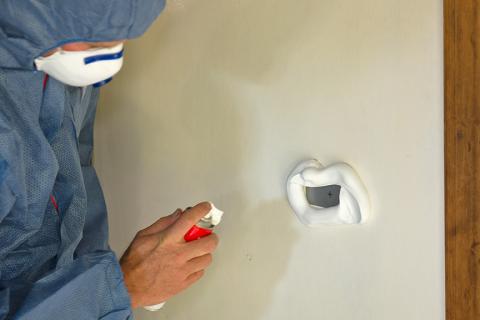
2. Apply shaving cream around the proposed drilling point, creating a circle of shaving foam around the area to be drilled. This will help capture any loose dust and debris.
Step 3
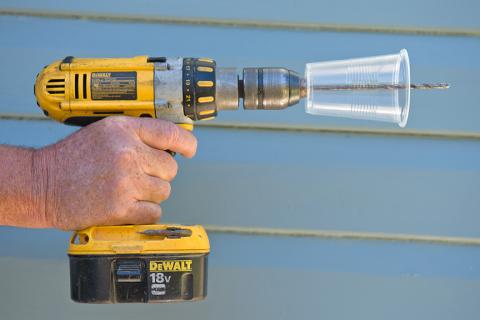
3. Pre-drill a transparent plastic cup (or polystyrene cup) with the same drill that will be used on the ACM and fit onto the drill bit. Place the drill bit through the cup, with the bit towards the top of the cup and extending beyond the cup (drill with hand drill or low-speed battery powered drill).
Step 4
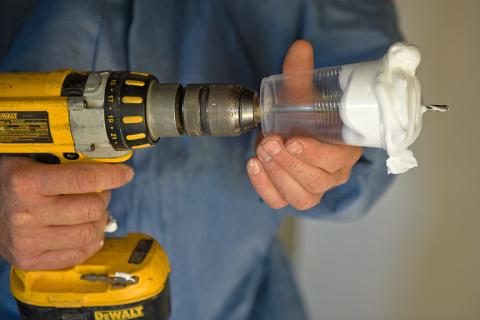
4. Fill the cup with shaving foam until slightly overflowing.
Step 5
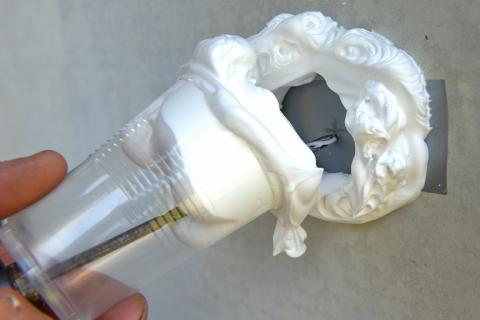
5. While holding the drill and the cup, place the point of the drill bit on the marked drilling point. Slide the cup with the shaving foam down the drill bit and proceed to drill the hole at low speed.
Step 6
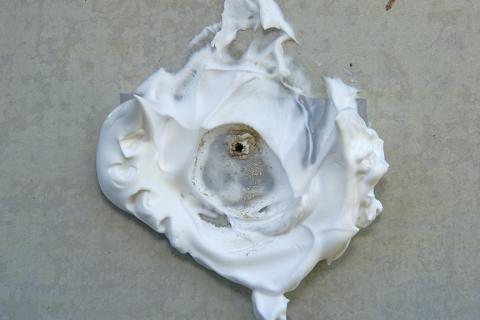
6. After the hole is drilled, remove the plastic cup and dispose of it in an approved asbestos waste bag which is correctly labelled and is 200 µm thick. The asbestos residue will be captured in the shaving cream around the drilled hole.
Step 7
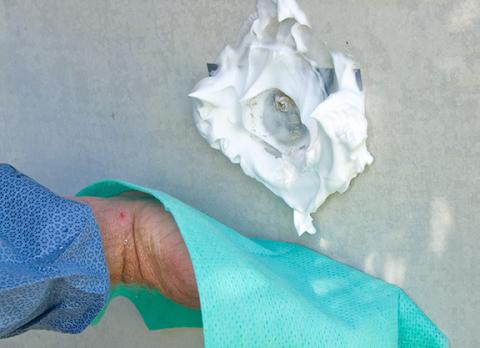
7. Wet wipe the shaving foam once over.
Step 8
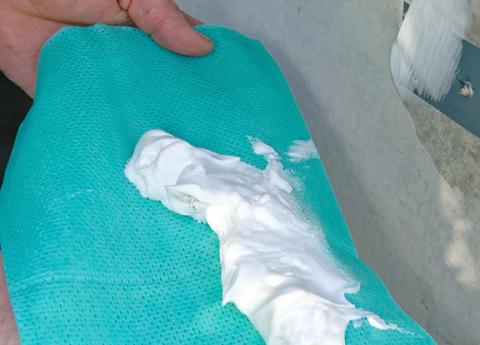
8. Remove the wipe from the wall.
Step 9
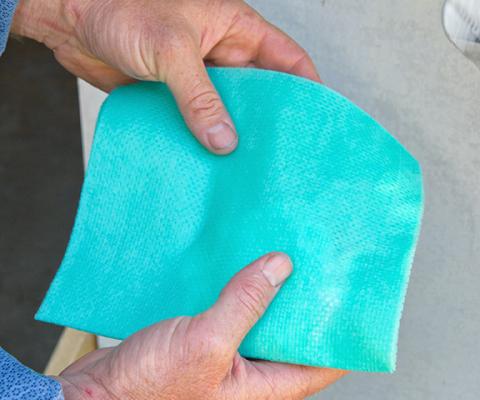
9. Fold the wipe in half and wipe the wall down again. Folding the wipe again and re-wiping the foam and residue again leaving a clean surface, and dispose of the wipe in a approved plastic asbestos waste bag.
Step 10
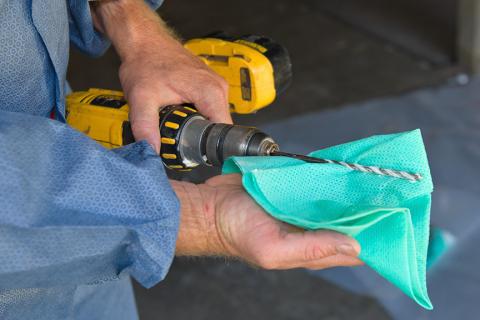
10. Using a new wipe, wet wipe the drill bit to decontaminate it. Dispose of the wipe in an approved asbestos waste bag which is correctly labelled and is 200 µm thick.
Step 11
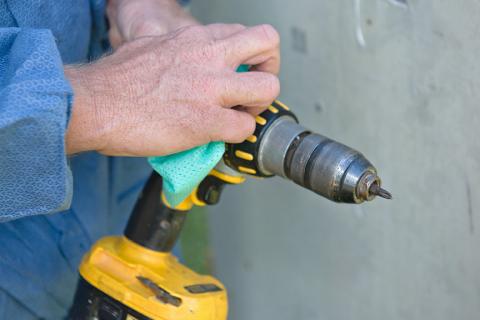
11. Decontaminate the cordless drill using a clean wet wipe. Dispose of the wipe in an approved plastic asbestos waste bag.
Step 12
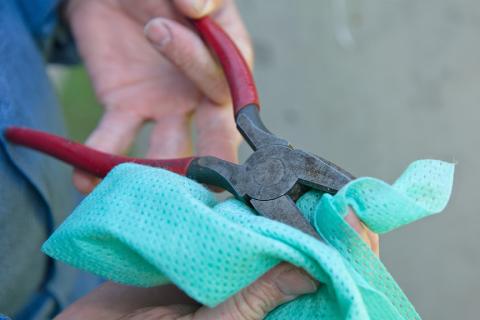
12. Decontaminate any other tools used in the drilling process using another clean wet wipe. Dispose of the wipe in an approved plastic asbestos waste bag.
Step 13
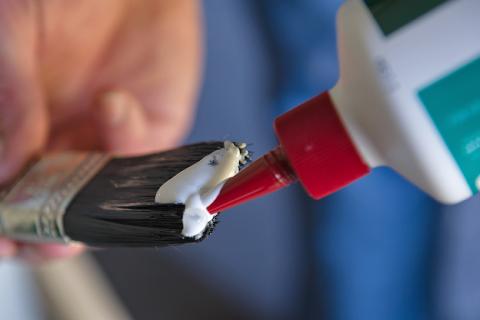
13. Use PVA glue, paint or similar to seal the edges of the drilled hole. If a cable is to be passed through the hole, insert a sleeve to protect the inner edge of the hole from fraying when feeding in the cable.
View the films about:
- Drilling of asbestos walls and ceilings - an extract from Asbestos Awareness - an informative guide to asbestos
- drilling into ACM from Working safely with asbestos - for the home renovator.
- Home
- General information
- What is asbestos?
- How was asbestos used?
- Are there health effects?
- The risks of exposure
- Health monitoring
- Legislation and codes of practice
- Low density asbestos fibre board
- Asbestos contaminated dust or debris
- Fires
- Cleaning up after floods and storms
- Importation prohibited
- Government and agency roles
- Asbestos in government assets
- Know where asbestos is
- Removing or disturbing asbestos
- Practical guidance
- Resources
- Asbestos alerts
- Asbestos news
- Codes of practice
- Guidance
- Films
- Asbestos safety session 2021
- Asbestos safety session 2020
- Cleaning Asbestos Roofs
- Shadow vacuuming with a H-Class vacuum cleaner
- Use and maintenance of a H-Class vacuum cleaner
- Identifying low density asbestos fibre board hazards and risks
- Working safely with asbestos for the home renovator
- How to properly wear personal protective equipment for airborne contaminants
- Personal protective equipment
- Dear Dad - An asbestos awareness film
- Clear and present danger: Asbestos exposed
- Uses and applications of asbestos - an extract from a film by Parsons Brinckerhoff
- Asbestos health issues - an extract from a film by Parsons Brinckerhoff
- Safe work procedure - storm and wind damage cleanup
- Drilling into asbestos walls and ceilings
- Asbestos - Removing switchboard panels
- Decontamination procedure, personal decontamination and cleanup procedures
- Asbestos awareness
- Safe work procedures
- Preparation before commencing the task
- Preparing and painting corrugated asbestos cement roof and fences
- Drilling into non-friable asbestos using a thickened substance to control airborne fibres and dust
- Drilling into non-friable ACM using an H rated industrial HEPA filter vacuum to control airborne fibres and dust
- Removing a small package electrical switchboard
- Cleanup and disposal
- Safe cleanup of storm damaged materials that may contain asbestos
- Frequently asked questions for homeowners and the general public
- Podcasts
- Strategies
- Working Safely with Asbestos Guide
- Asbestos awareness week 2025
- Asbestos management compliance campaign
- Induction and safety training for unlicensed work
- Sanctions